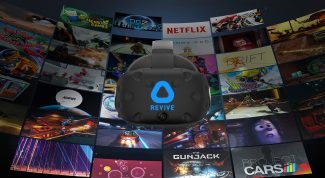Quality Assurance
 Today, plenty of Vive users are using workarounds like Revive to tap into the Oculus ecosystem in a way that Oculus has tolerated, but Mitchell says that when the company decides to officially open the door to third-party headsets, they want to be able to provide the same level of support and quality assurance as they do for Rift users, but they’re not ready to take that on.
Today, plenty of Vive users are using workarounds like Revive to tap into the Oculus ecosystem in a way that Oculus has tolerated, but Mitchell says that when the company decides to officially open the door to third-party headsets, they want to be able to provide the same level of support and quality assurance as they do for Rift users, but they’re not ready to take that on.
“Our team works around the clock to make sure that our customers—Oculus customers—have a phenomenal experience. It’s paramount to who we are as a company in terms of the products we build—we have this philosophy that we want to deliver a great experience. So today if you go and buy a Rift, go home and plug it in, you know that you have our team there to support you 100% no matter what happens. That is not true for all the VR systems out there by a long shot, right? Our sort of ‘It Just Works’ philosophy—we try to carry it through everything, “Mitchell told me. “[…] In terms of support and supporting those users [from other headsets], that’s not something that we’re ready to take on yet, because there really not only isn’t a path to actually doing that, but we’re not in a place where we’re ready to have all of those systems plugging in. That’s a lot of engineering effort, that’s a lot of operational effort, there’s a lot that goes into making that great. But, over the long term, that is something we want to do. Maybe not necessarily for Vive—or maybe for Vive—but definitely for future headsets, and we see only more people coming into this market.”
Oculus Compatible

So what would a future look like where customers can go out and buy third-party headsets that can tap into the Oculus ecosystem in an officially sanctioned way? Mitchell explains his vision.
“[…] we want the Oculus platform to be a place where people come and they go out and they look for headsets that are compatible with Oculus because that is the best place to be, bar none. And I think right now, when you look at our content lineup, and our leading graphics stack and everything else that we’re doing, a lot of people see that right now,” he said. “And you have Vive users who are buying Rifts, or even PSVR users buying Rifts, coming into the ecosystem and saying ‘Oh my god, the content class here is sort of a cut above, and the experience that you have on the Oculus software stack is a cut above’, and we’re really proud of that. So when we can deliver that same great experience on other devices in a way that is both technically feasible and makes sense from an operational perspective, I would love for us to really enable that, and go big in that direction.”
Two (Virtual) Thumbs Up
The existence of Revive, I told Mitchell, means there’s clearly demand for a way into the company’s ecosystem through other headsets. Does Oculus see that demand as a positive?
“We’re definitely aware of it, and as I said before, the Lone Echo team—you know if you jump in Echo Arena, [and you see that] people’s thumbs are up, it’s obvious that those are Revive users. […] I do see that as a massive positive because it means that there’s gonna be way more people in [for instance] the Echo Arena community for me to compete against […]. […] And we’ve always said that we’re trying to do what’s best for the ecosystem. So if there are users who were jumping into Echo Arena on their Vive’s… they will do as they will.”
Black Box
Though Mitchell says he sees the unofficial participation of Vive users in the Oculus ecosystem as a positive, I was surprised to learn that the company claims to not have a good idea of how many Vive users are playing on the Oculus platform.
“The truth is that we have all sorts of—some stats on the store itself, but it’s hard to discern other headsets versus our own. A lot of users too tend to be Oculus users and potential Vive users, and it’s hard to disambiguate all of those folks.”







